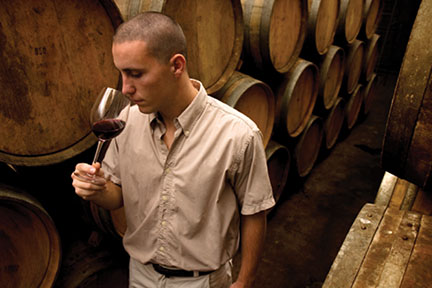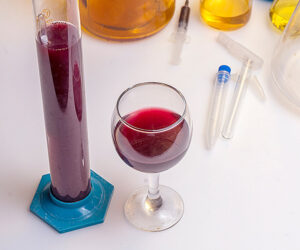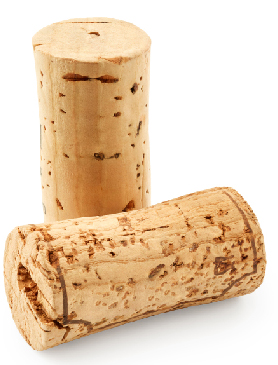 Have you ever tasted a wine that had what is described as a “barnyard smell”? Perhaps you didn’t care for it but your significant other or friend really enjoyed it, or maybe, even worse, someone at a tasting party exclaiming “there’s horse (expletive for excrement)” in this wine.
Have you ever tasted a wine that had what is described as a “barnyard smell”? Perhaps you didn’t care for it but your significant other or friend really enjoyed it, or maybe, even worse, someone at a tasting party exclaiming “there’s horse (expletive for excrement)” in this wine.
And that is the nature of what is often colloquially if not affectionately referred to as “Brett”— short for Brettanomyces, the yeast responsible for this phenomenon in wine.
I’ll admit that I’m quite fond of Châteauneuf-du-Pape wines from the Rhône region in southeastern France, wines known for their hint or not-so-subtle barnyard aroma (I prefer to use “aroma” as a descriptor of a pleasant smell as the latter often has a negative connotation). When excessive, however, the smell can be off-putting and distract from any other positive attributes.
Just recently on a trip to southern Italy’s Puglia region was I reminded how grotesque Brett can be. I drank a bottle of full-bodied Negroamaro that was probably vinified in open casks sitting in the middle of a stable with horses freely roaming around. The next evening, I went to the same restaurant but had a Primitivo; though much better, Brett was still very much present. I didn’t think Brettanomyces had become endemic to this beautiful part Italian region.
So, what’s going on here? Is Brettanomyces rooted in vineyards? Can it spread to a whole region? Or is it a sign of poor hygiene in the cellar?
This last question is without doubt the most controversial. I recall a winery that steadfastly refused to take any other winery’s wine into their cellar (buying and selling wine between wineries is a common industry practice). They simply did not want to risk an infection in their own winery, an infection which could prove to be a formidable challenge, if not impossible, to eradicate.
Are the fears real? Is Brett that big a deal?
There certainly are a lot of misconceptions and misinformation about Brett and on the root causes of infections in wine. But recent studies have shed light on this controversial topic. Vincent Renouf has spent many years studying Brettanomyces yeast and has published his findings in his authoritative French-language book Brettanomyces et phénols volatils: Outils pratiques pour prévenir et limiter les alterations dans les vins (Lavoisier 2015). Renouf is an enologist–microbiologist and currently Director of Research and Development at Chêne & Cie., a barrel-servicing and distribution company that owns such popular brand names as Taransaud and Canton. His knowledge of barrel chemistry and wine microbiology is relevant in that barrels are the most common cause of Brettanomyces infections and propagation.
Where does Brett come from?
Brettanomyces specifically refers to the Brettanomyces bruxellensis yeast species, which belongs to the family of Pichiaceae imperfect fungi. It is the non-sporulating form of Dekkera bruxellensis, which belongs to the order of Saccharomycetales, as do Saccharomyces cerevisiae winemaking yeasts.
B. bruxellensis, or simply Brett, is a ubiquitous spoilage yeast that can impart a strong barnyard or Band-Aid-like smell to red wine aged in barrels. It is the most pervasive species in wine although other species, such as B. anomalus, can be found. Once the yeast has set into barrels or anywhere in the winery, it is difficult to eradicate and can easily propagate, particularly being tolerant of alcohol levels found in wine.
A Brettanomyces infection is often, mistakenly so, associated with poor hygiene in the cellar. However, the yeast is part of the vineyard’s natural microflora residing on grape berries, particularly overripe and Botrytis-affected grapes, and is transported into the winery with the harvest. Botrytis (B. cinerea) is a mold that pierces through grape skins and dehydrates berries, which causes gray rot to set in. Brettanomyces can set in right from fruit set. And sulfur dioxide (SO2) at crush is not effective in inhibiting the yeast at the rate typically used to inhibit other indigenous yeast.
Red wines are more prone to Brett infections because grapes are normally harvested later and at greater phenolic ripeness compared to white varieties, and are then allowed to macerate, unlike in white winemaking. Press fractions also tend to have greater Brett populations. White wines are typically administered higher doses of SO2 to inhibit oxidative effects, and which, given their lower pH compared to reds, molecular SO2 is much more effective against microorganisms. Juice from white varieties are also racked after a 24-hour settling period, which greatly reduces the population of indigenous yeasts.
Given their strong physiological resistance, Brettanomyces can persist in a winery and particularly in the barrel cellar for very long periods of time during which it can easily contaminate equipment and wine. Certainly poor hygiene in the cellar will aggravate the infection.
The good and ugly sides of Brettanomyces
In very small concentrations, the subtle barnyard smell can add aroma complexities for those who are partial to that style. Brett can, however, manifest itself differently in wines and impart a range of aromas, smells and flavors that can vary greatly from one strain to another. The most common include cider, clove-like, spicy, smoky, medicinal, mousy, horsey, wet wool, sweaty and burnt bean aromas and smells.
Brett-related smells are the result of two main compounds, 4-ethylphenol (4EP) and 4-ethylguaiacol (4EG), usually referred to as 4EP/4EG as they appear together, as well as 4-ethylcatechol (4EC). Collectively, these are referred to as ethylphenols. These compounds are very volatile phenols that derive from the decarboxylation of their naturally occurring hydroxycinnamic acid precursors, p-coumaric, ferulic and caffeic acid, respectively, into their vinylphenols, followed by enzymatic reduction. They also result from 3-methylbutyric acid, also known as isovaleric acid, derived from its L-leucine amino acid precursor. All these compounds can be detected at very low concentrations. Detection of specific smells depends on the relative concentrations of Brett compounds in the wine — not just their absolute detection thresholds. But to put these into perspective, detection thresholds of 4EP and 4EG are 600 and 110 µg/L — one µg/L is one-millionth of a gram in one liter (about 1⁄4 of a gallon) of wine!
But Brett also causes several other important metabolites, including acetic acid, responsible for volatile acidity (VA) and a vinegar-like smell, as well as short- and medium-chain fatty acids, so-called because of the length of their carbon chains in their molecular structures, which can cause olfactory deviations. For example, isovaleric and isobutyric acids can impart smells of cheese crust and rancid butter, and can increase the perception of ethylphenols and their sensory impacts.
Other secondary metabolites and their range of aromas/smells include 2-phenylethanol (floral, rose, jasmine, lilac, honey, spice), guaiacol (toasted or burnt wood), ethyl decanoate (oily, fruity, floral), trans-2-nonenal (gas, medicine, plastic, rancid, farm, chemical), isoamyl alcohol (harsh, nail polish, fusel, whiskey, feet, malt, cheese, rancid, burnt), and ethyl-2-methylbutyrate (apple, strawberry, berry, sweet syrup, cider, anise).
Some strains are also capable of producing biogenic amines, such as phenylalanine and agmatine, as well as several other heterocyclic amines, all of which can impart off-odors and flavors to wine. Phenylalanine and agmatine can also compound the effects of histamine, a biogenic amine responsible for causing headaches.
Unlike S. cerevisiae yeasts, Brettanomyces have more specific cinnamate decarboxylase enzymes that are uninhibited by phenolic compounds found in juice and wine, and also possess vinyl phenol reductase enzymes that reduce the 4-vinyl compounds into their malodorous 4-ethyl forms. And so, any yeast that possesses cinnamate decarboxylase enzymes used for fermenting juice greatly increases the risk of Brett. There are now commercial yeast preparations devoid of these enzymes, such as Saccharomyces POF (Phenol Off Flavor negative).
It doesn’t take much
A distinguishing feature of Brettanomyces yeasts compared to other yeasts is their capacity to ferment and produce carbon dioxide from glucose more rapidly under aerobic conditions than under anaerobism. It can convert very low levels of glucose, as low as 275 mg/L, into acetic acid and VA, which puts dry wines at risk too. Wines are considered dry at less than 2 g/L (0.2%) of reducing sugars. Renouf recommends less than 50 mg/L to minimize the risk of Brett spoilage — that’s 0.05 g/L or 0.005%! 275 mg/L of fermentable sugars is sufficient to produce 425 µg/L of 4EP, which is close to its detection threshold of 600 µg/L; in the presence of 4EG, 4EP detection threshold is 425 µg/L.
Under aerobic conditions, Brettanomyces can also use proline as a source of carbon and nitrogen; proline is an amino acid found plentiful in must and finished wine, as much as 300 mg/L, as S. cerevisiae is unable to metabolize it during fermentation. It has been shown that as little as 6 mg/L of yeast assimilable nitrogen (YAN) is sufficient for B. bruxellensis to achieve a population size of 107 cells/mL. Again, to put this into perspective, S. cerevisiae yeast needs in the order of 200 mg/L of YAN to sustain a healthy fermentation population of 106 cells/mL. We can see why poor hygiene or residual sugar are not necessarily pre-conditions for Brett spoilage.
But wines aging in barrels are at higher risk because some strains of resident yeast can feed on cellobiose in oak wood. Cellobiose is a sweet disaccharide produced from cellulose hydrolysis during manufacture of oak barrels. S. cerevisiae is unable to ferment cellobiose but Brettanomyces can. At higher glucose concentrations, VA can increase significantly and cause acetic spoilage; however, at very low concentrations the conversion is very slow, for example, six months, making detection very difficult.
Although Brettanomyces yeast can be sensitive to high ethanol levels, the common occurrence of Brett spoilage in wine with as much as 15–16% alc./vol. suggests otherwise. As with many spoilage microorganisms, this yeast thrives most at high pH, above 3.6, and with increasing temperature, and is only moderately sensitive to SO2. It becomes sensitive at levels higher than 30 mg/L free SO2 and 0.7–0.8 mg/L molecular SO2. Renouf recommends a minimum of 0.6 mg/L molecular SO2 throughout winemaking but particularly during barrel maturation to greatly decrease the probability of a Brettanomyces infection in the wine. In general, 0.5 and a maximum of 0.8 mg/L of molecular SO2 for reds and whites, respectively, are recommended.
Testing for and detecting Brett
Testing for, detecting, and quantifying a Brett infection is a challenge, and certainly well beyond the means and expertise of home winemakers.
The most conclusive results would quantify ethyl phenols present in wine, but that requires use of gas chromatography (GC) equipment and expertise. GC is not unlike paper chromatography, used for determining completion of malolactic fermentation (MLF), in that it separates gases (by virtue of their vapor pressure differences) instead of separating acids, however, the equipment is relatively sophisticated.
Short- and medium-chain fatty acids can be used as markers to identify Brettanomyces infections, but these too require GC methods.
Detection of VA only is not sufficient to confirm a Brett infection. VA can result from Acetobacter, the bacteria responsible for metabolizing ethanol into acetaldehyde and acetic acid.
Plating, a microbiological analytical method, is most expedient and much cheaper. Plating involves cultivating microorganisms on selective growth media, while inhibiting unwanted microorganisms, to provide a source of nutrients for the microorganism under study to allow metabolism, growth, and reproduction to occur, all in a controlled and sterile environment. It is commonly used for isolating and identifying yeasts and bacteria, and counting viable yeast cells in a colony under a microscope.
Alternatively, you can send a wine sample to a lab. White Labs (www.whitelabs.com) also sells wine analysis sample kits where you can mail in samples for Brett analysis; these also include other tests for titratable acidity (TA), pH, SO2, residual sugar, alcohol, and malic acid. Each kit includes a numbered sterile bottle and a prepaid shipping label.
But the single most important advice here is to invest in an SO2-measuring tool. Staying on top of SO2 levels is absolutely critical.
Treating infected wines
The adage that prevention is better than cure couldn’t be truer in winemaking. Eradicating a Brett infection is almost impossible.
Infected wines can be treated with dimethyl dicarbonate (DMDC) at bottling in conjunction with sulfite and sterile filtration to reduce the risk of continued Brettanomyces spoilage post-bottling. DMDC, better known commercially as Velcorin®, produced by LANXESS, is a common beverage preservative and sterilant. It is an effective alternative to sulfite, sorbate, sterile filtration, and flash pasteurization, particularly in wines with residual sugar. It works by entering microorganism cells and inactivating key fermentative enzymes through hydrolysis. However, it requires specialized equipment and special handling precautions as it can cause skin and eye irritation as well as ingestion and inhalation problems; therefore, it should be handled and added by an experienced enologist. Needless to say, you won’t find any DMDC at your local home winemaking supply store. And sterile filtration is not possible in a home winemaking setting (sterile filtration is possible but sterile bottling isn’t, and therefore, sterile filtering becomes pointless).
What’s the alternative? Chitosan. Home winemakers are familiar with this product; it is often used as a fining agent.
Chitosan is an anti-fungal agent shown to have good effectiveness at controlling the Brettanomyces population in infected wines; however, it cannot reduce 4EP/4EG levels. Chitosan is a polysaccharide derived from chitin, a major structural component of the exoskeleton of crustaceans as well as in the cell walls of filamentous fungi, such as Aspergillus niger. It also has many commercial applications from the medical, cosmetic and agricultural industries. Only chitosan derived from A. niger fungi, such as Lallemand’s No Brett Inside product, is allowed in winemaking. Dominique Delteil of Delteil International Wine Consulting also recommends an additional aggressive treatment with yeast derivative nutrients, such as Lallemand’s Noblesse, to deal with potential secondary off-odor and flavors. For additional application information, see http://www.apps.fst.vt.edu/extension/enology/downloads/Delteil_Noblesse_guidelines_dec_2010.pdf. As chitosan can inhibit malolactic fermentation (MLF), the wine should be treated post MLF.
Preventing Brett Infections
Rather than treat your wine post infection, the best method of dealing with Brett is to prevent it. See the list of best practices below for preventing Brett. If you make wine from kits, there are no issues as the concentration and processing inhibit and remove spoilage organisms. As for fresh juice, I have never had any issues, but there is always a risk depending on how the juice was processed. And from grapes, well, I have had Brett in my wines and some of which came from grapes that travelled in refrigerated trucks from Lodi, California to Montreal, Quebec, and so, Brett can survive cold temperatures.
And most important, if you have never come across that distinctive horse-like quality in your wine, try and find a commercial wine known to have Brett that you can smell and taste so that you can recognize it and spot it. Châteauneuf-du-Pape wines are a good bet.
Observe the following best practices of winemaking and cellar management to avoid, or at least minimize, the risk of Brett infections.
• Don’t take in someone else’s bulk wine into your own winemaking area or cellar, particularly if it was barrel aged.
• Implement a strict sanitizing regimen; don’t cut corners.
• Discard any moldy fruit from the harvest.
• Sulfite as soon as the alcoholic or malolactic fermentations are complete — this is absolutely critical. Use WineMaker magazine’s Sulfite Calculator at http://winemakermag.com/1301-sulfite-calculator to determine your sulfite additions. And remember . . . a single, strong dose is more effective than multiple smaller doses added at some regular interval.
• If you suspect a Brettanomyces infection (before you detect 4EP/4EG), or for preventative purposes, treat the wine with chitosan.
• Only barrel age completely dry wines, as dry as possible. If you want a sweeter style wine or you need to balance the acidity, backsweeten at bottling in glass carboys or stainless steel tanks — never in barrels.
• Top up barrels regularly and maintain proper SO2 levels; this applies to all wines, not just barrel-aged wines. Check and adjust levels at regular intervals, not exceeding 3 months, and more frequently in a dry barrel cellar.
• Be wary of high-pH wines; keep a very close eye on those and double up on SO2 vigilance
• If you need to chaptalize (to add sugar to increase potential alcohol), do so as early as possible; adding sugar in the later stages of fermentation increases risk.
• Do not add any nitrogen supplements late in the fermentation stage. Your last nitrogen supplement addition should be done at one-third sugar depletion; for example, if your must measured 22 °Brix, add the nitrogen supplement at around 15 °Brix.
• Do not age wine on the lees for too long as they are a source of nutrients for Brettanomyces.
• Store and age wine at cool temperature, ideally at around 55 °F (13 °C).
• Fine filter wines down to below 1 micron, ideally 0.45 micron, at bottling.
• If you must store empty, previously used barrels, rinse them thoroughly with plenty of water and let dry for 24 hours in the bung-down position. Then burn a piece of sulfur stick or disc and seal the barrel with a bung; repeat every month.
• Alternatively, store used barrels with a sulfur–citric holding solution prepared by dissolving in water 2 g of potassium metabisulfite and 1 g of citric acid for every liter (1⁄4 gallon) of barrel volume (1 oz is about 28 g). Top up barrels once a month with the same solution.
• Immediately discard any barrel that you suspect of a Brett or VA infection.







